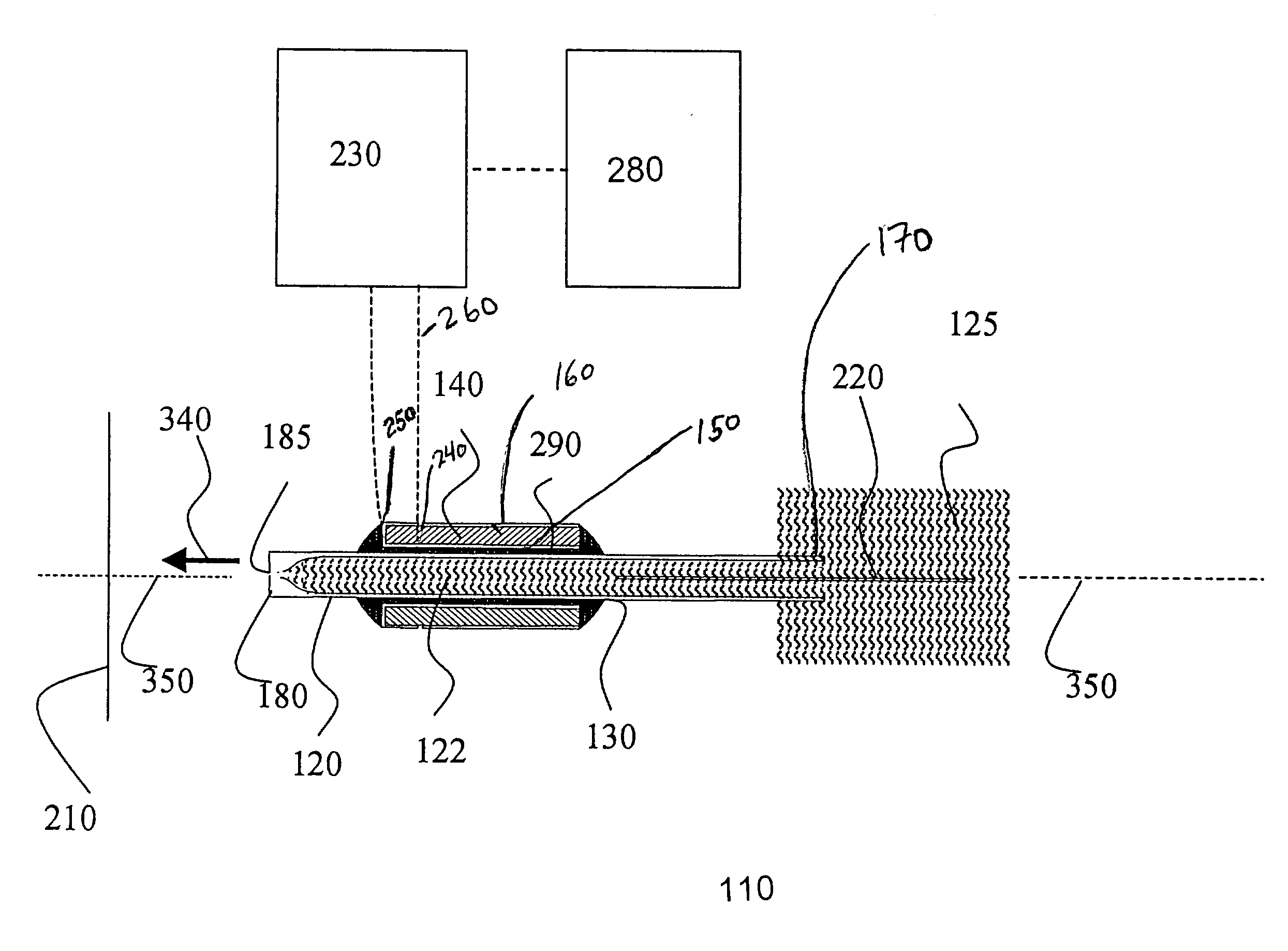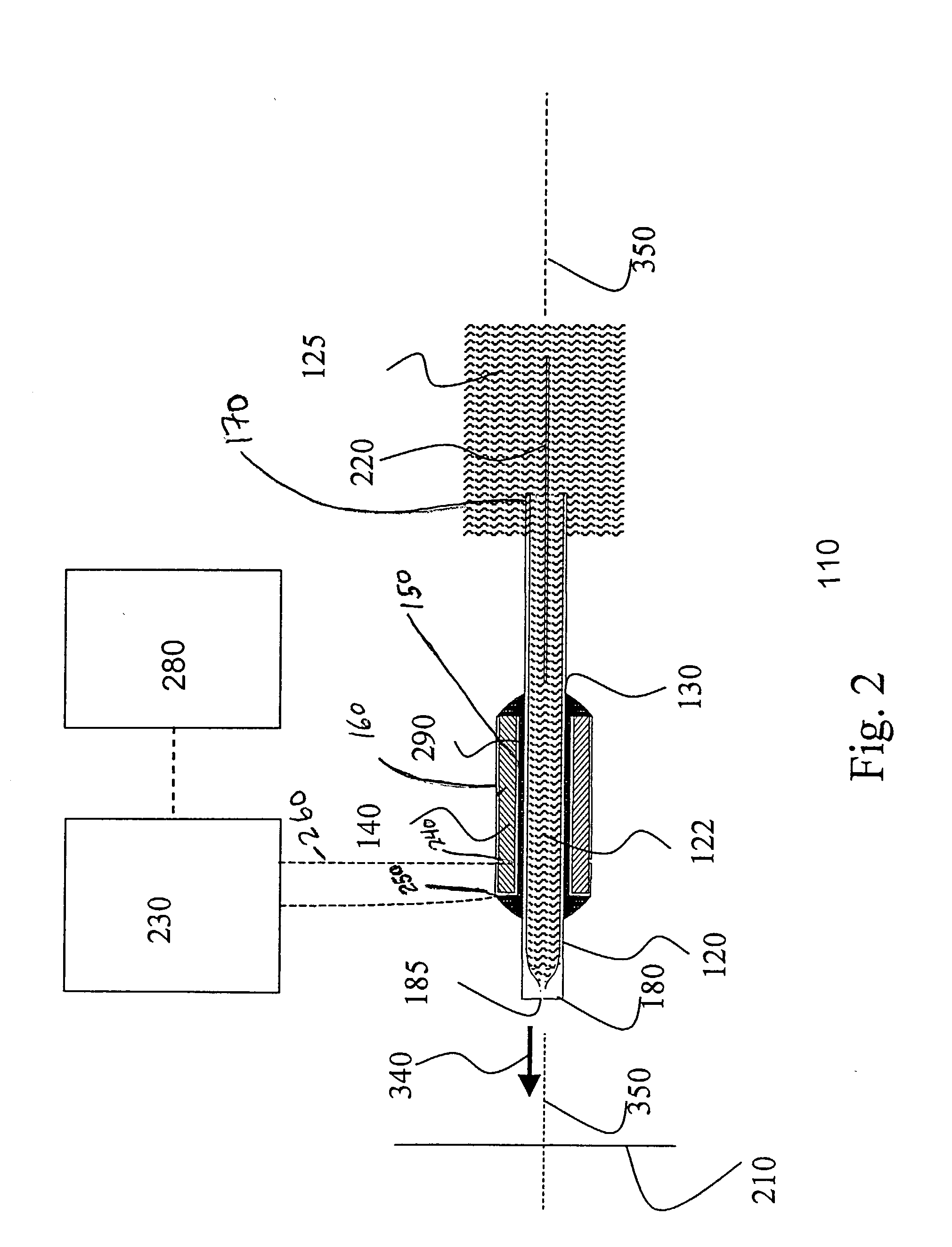Piezoelectric charged droplet source
a technology of charged droplets and droplets, which is applied in the field of piezoelectric charged droplet sources, can solve the problems of affecting the detection accuracy of piezoelectric droplets, etc., and achieves the effect of high detection sensitivity and resolution, and hinders the use of high molecular weight compounds for analysis
- Summary
- Abstract
- Description
- Claims
- Application Information
AI Technical Summary
Problems solved by technology
Method used
Image
Examples
example 1
Analysis of Protein and DNA Containing Samples
[0134] The use of the ion source of the present invention for the detection and quantification of biopolymers was tested by analyzing liquid samples containing known quantities of protein and oligonucleotide analytes using an ion source of the present invention operationally connected to an orthogonal acceleration TOF-MS. The initial charged droplets were generated via the piezoelectric charged droplet source described above. The dispenser element of the charged droplet source was a glass capillary (0.5 mm inner diameter, 0.73 mm outer diameter) with one end drawn down to produce a 32 micron diameter exit aperture. The total length of the glass capillary was 17 mm. To increase the usable sample volume during initial implementation, an additional 3.2 cm length of tubing (1.8 mm inner diameter) was attached to the opposite end of the capillary. The sample solution was held at a high potential via a platinum electrode placed inside the exte...
example 2
Single Particle Mass Spectrum
[0139] An ion source of the present invention has also been used to generated a mass spectrum from a single charged droplet using orthogonal time of flight detection. In these experiments spectra of bovine insulin (5734.6 amu, 10 .mu.M in 1:1 H.sub.2O:CH.sub.3OH 1% acetic acid) were obtained for a range of droplet sampling conditions. FIG. 10A displays the mass spectral analysis of 100 droplets, FIG. 10B displays the mass spectral analysis of 10 droplets and FIG. 10C displays the mass spectral analysis of a single droplet. The number of droplets generated for each spectrum was controlled using the piezoelectric charged droplet source of the present invention. Each droplet had a volume of approximately 100 picoliters calculated from the observed 30 micron droplet diameter. The piezoelectric source was operated at a frequency of 50 Hz, with a pulse amplitude of 65 V, and a pulse width of 30 .mu.s. The spray voltage employed was 2500 V, in positive mode. As...
example 3
Variation of Solution Conditions of the Liquid Sample
[0140] The ion source of the present invention was evaluated for a range of solution compositions of the liquid sample analyzed. FIGS. 11A-D display the mass spectra obtained from 100 pulses of a 5 .mu.M insulin sample from each of 4 different solution compositions, A) 75% MeOH in water, B) 50% MeOH in water, C) 25% MeOH in water and, D) a straight aqueous solution; all sample solutions contained 1% acetic acid. As shown in these spectra, the measured signal varied by less than three fold over this range. This application demonstrates the robustness and high degree of versatility of the droplet and ion sources of the present invention. The ability to analyze samples over a wide range of solution conditions is especially beneficial for the analysis of liquid samples containing biomolecules, such as proteins or nucleic acids, that are present in a specific physical and / or chemical state highly dependent on solution phase conditions....
PUM
 Login to View More
Login to View More Abstract
Description
Claims
Application Information
 Login to View More
Login to View More - R&D
- Intellectual Property
- Life Sciences
- Materials
- Tech Scout
- Unparalleled Data Quality
- Higher Quality Content
- 60% Fewer Hallucinations
Browse by: Latest US Patents, China's latest patents, Technical Efficacy Thesaurus, Application Domain, Technology Topic, Popular Technical Reports.
© 2025 PatSnap. All rights reserved.Legal|Privacy policy|Modern Slavery Act Transparency Statement|Sitemap|About US| Contact US: help@patsnap.com



